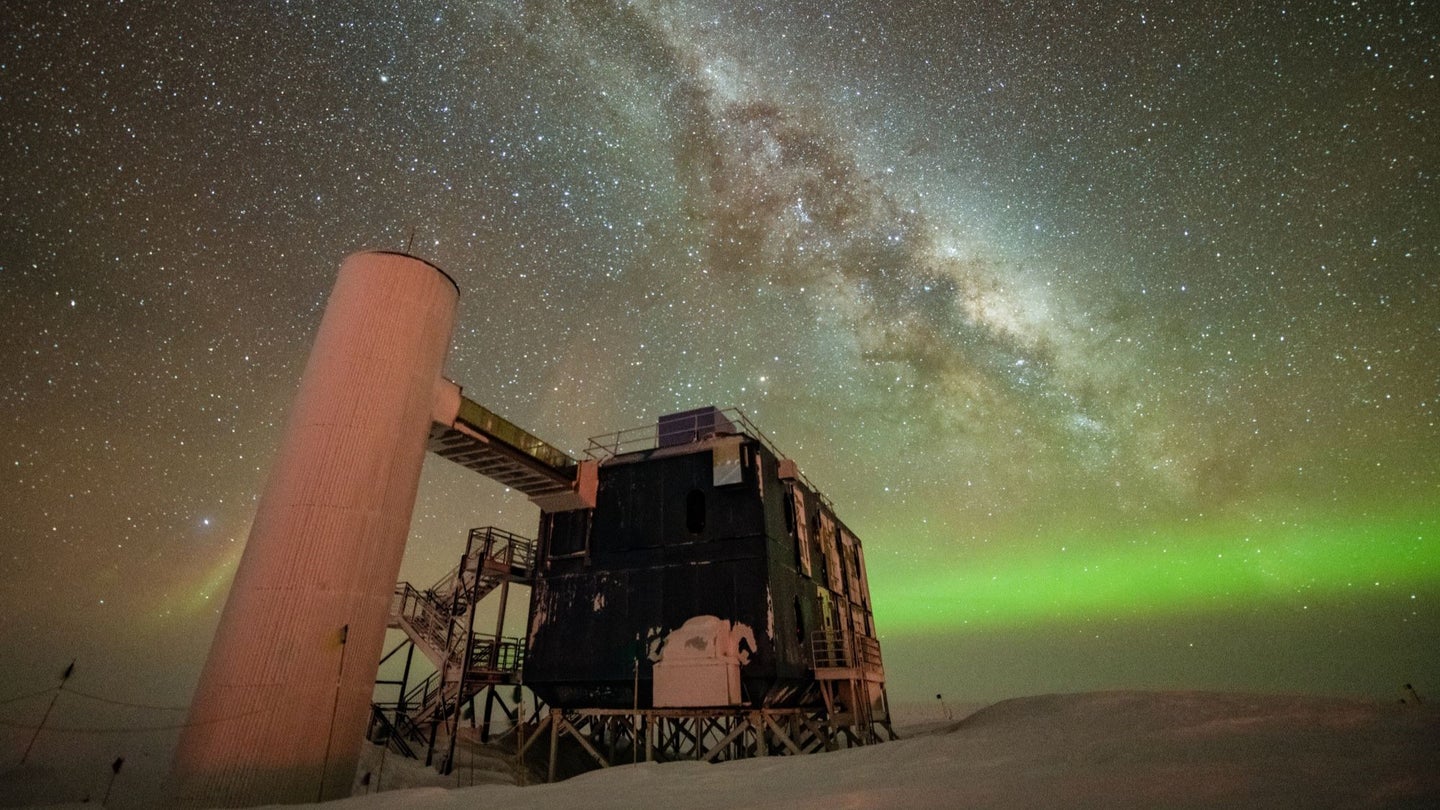The Milky Way’s ghostly neutrinos have finally been found
There should be plenty of these subatomic particles emerging from our galaxy, but until now they'd never been detected.

Neutrinos fill the universe, but you wouldn’t know that with your eyes. These subatomic particles are small—so small that physicists once thought they had no mass at all—and they have no electric charge. Even though trillions of neutrinos enter your body every second, the vast majority of them pass through without a trace.
Yet astronomers crave glimpses of neutrinos. That’s because neutrinos are products of cosmic rays, cryptic high-energy particles constantly streaming throughout the universe from all directions. Astronomers aren’t sure where cosmic rays come from, how they behave in flight, or—in many cases—what they’re made of.
Neutrinos can help researchers find out, but they have to see those particles first. Until now, astronomers had only confirmed that they’d found neutrinos originating from outside our galaxy. But in a paper published in Science today, a global team of astronomers announced a long-sought goal: the first neutrinos that hail from the plane of the Milky Way itself.
“This is a very important discovery,” says Luigi Antonio Fusco, an astronomer at the University of Salerno in Italy, who was not an author of the paper.
Seeing these ghosts is a tricky task. A neutrino observatory looks nothing like a telescope or a radio dish. Instead, the paper’s authors worked with an array of holes drilled more than a mile into the South Pole ice: the IceCube Neutrino Observatory. Down those shafts, deep in the frozen darkness, IceCube’s detectors watch for light trails from the particles that neutrinos spawn when they collide with matter.
[Related: This ghostly particle may be why dark matter keeps eluding us]
In water or ice, light only travels around three-quarters of its speed limit. Particles can move through those substances quicker than that (though not faster than speed of light in a vacuum). If they do, they shoot out cones of bright light called Cherenkov radiation, equivalent to a sonic boom. Some neutrino observatories, such as ANTARES at the bottom of the Mediterranean, look for Cherenkov radiation in water. IceCube uses, well, ice.
Even after scientists tabulated how to find those neutrinos, they faced another problem: noise. Neutrino detectors constantly detect the result of cosmic rays careening into the upper atmosphere, pumping subatomic particles into the planet. How, then, do you find the needles of cosmic neutrinos in that high-energy haystack?
The answer is by examining the direction. Neutrinos from afar have higher energies and can more easily shoot through our planet. If your detector spots a neutrino that seems to be coming from the ground, there’s a healthy chance it came from space and passed through Earth before striking your detector.
In 2013, IceCube detected the first cosmic neutrinos. In the years since, they’ve been able to narrow neutrino sources down to individual galaxies. “We have been detecting extragalactic neutrinos for 10 years now,” says Francis Halzen, a physicist at the University of Wisconsin and a member of the IceCube collaboration.
[Related: Dark energy fills the cosmos. But what is it?]
But one important source was missing: neutrinos from within our own galaxy. Astronomers believe that there should be plenty of neutrinos emerging from the Milky Way’s plane. IceCube scientists had tried to find those neutrinos before, but they’d never been able to confidently pinpoint their origins.
“What changed in this analysis is that we really improved the methods that we’re using,” says Mirco Hünnefeld, a scientist at the Technical University of Dortmund in Germany and a member of the IceCube collaboration.
The IceCube team sharpened their artificial intelligence tools. Today’s neural networks can pluck out neutrinos from the noise with keener discretion than ever before. Astronomers analyzed more than 59,000 IceCube detections collected between 2011 and 2021 and compared them against predicted models of neutrino sources.
As a result, they’re confident that their detections can be explained by neutrinos streaming off of the Milky Way’s flat plane and, in particular, the galactic center.
Now, astronomers want to narrow down the points in the sky where those neutrinos actually come from. More sensitive neutrino detectors can help with that task. IceCube will get upgrades later this decade, and a new generation of neutrino observatories—such as KM3NeT in the Mediterranean and GVD under Russia’s Lake Baikal—will expand astronomers’ neutrino-seeing toolbox.
“The IceCube signal is kind of a diffuse haze,” says Fusco. “With the next generation, I think we can really push to try to point out which are the individual sources of this signal.” If astronomers can do that, they can learn more about the sources that create cosmic rays, which could potentially be supernovae.
“Only cosmic rays make neutrinos, so if you see neutrinos, you see cosmic ray sources,” says Halzen. “The goal of neutrino physics, the prime goal, is to solve the 100-year-old cosmic ray problem.”
“That will help us disentangle a lot of the mysteries out there,” says Hünnefeld, “that we couldn’t do before.”